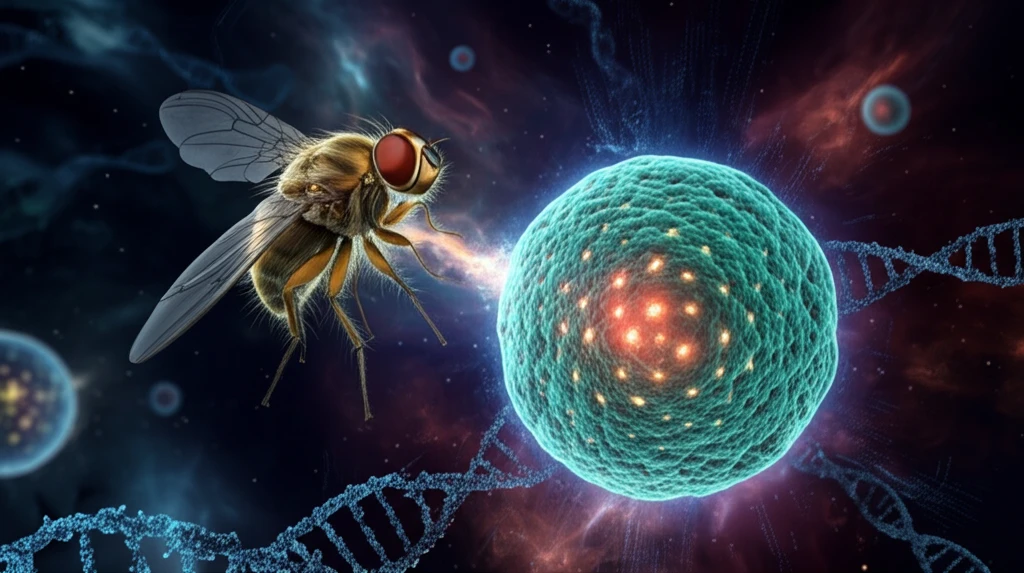
Decoding Life's Blueprint: How Two Unrelated Proteins Organize Germ Cells
"Scientists uncover functional equivalence in Oskar and Bucky ball proteins, revealing a hidden evolutionary connection and revolutionizing our understanding of germ plasm."
At the very core of existence lies the remarkable ability of living organisms to replicate. In animals, this process hinges on primordial germ cells (PGCs), the specialized precursors to reproductive cells. These cells are sculpted during embryogenesis through two distinct mechanisms. Inductive specification uses embryonic signals, and maternal-inheritance employs pre-packaged determinants in the egg. Germ plasm, a key determinant, ensures the formation of healthy and fertile offspring.
The fruit fly protein Oskar (Osk) and the zebrafish protein Bucky ball (Buc) are essential germ plasm organizers. While both proteins trigger germ plasm activity, they appear unique to their respective animal groups. Oskar mutants lack germ plasm, whereas mis-localized Oskar induces ectopic PGCs. Although Osk is essential in flies, it isn't found in vertebrates; Buc plays a similar role in fish. Yet, it's function in both organism piqued scientist interest.
Now, scientists reveal Osk and Buc share similar functions, challenging traditional views of protein homology. This discovery suggests a deeper, conserved mechanism at play, with implications for our understanding of evolution and reproductive biology.
A Tale of Two Proteins: Unveiling Functional Equivalence

The research team began by exploring whether Osk and Buc could reprogram somatic cells into PGCs. The germ cell induction assay leveraged the knowledge that somatic cells segregate from the germline at the 16-cell stage in zebrafish. By injecting a reporter mRNA into either middle or corner blastomeres—cells containing endogenous germ plasm or somatic cells, respectively—the team tracked PGC specification. The results were striking: Drosophila Osk induced additional PGCs in zebrafish, similar to Buc, suggesting a shared capacity to specify germ cells.
- The team searched for remote homologies using profile hidden Markov models (HMM), but this also failed to detect significant similarities.
- Alignment of vertebrate Buc orthologs identified two conserved motifs within the previously described BUVE-sequence and another novel motif in the center of Buc.
- Similar analysis of Osk detected known motifs: the LOTUS-domain, the Lasp binding region, and a putative hydrolase homology sequence.
- Comparing the HMM-models of sOsk and Buc to each other did not uncover conserved motifs.
Implications and Future Directions
This research illuminates the conserved biochemical interactions of Osk and Buc, revealing a functional equivalence despite their lack of sequence homology. This discovery challenges traditional views of protein evolution and opens new avenues for understanding germ cell specification across diverse species. Further research may uncover additional components of this conserved core complex and shed light on the precise mechanisms regulating germ plasm assembly.
